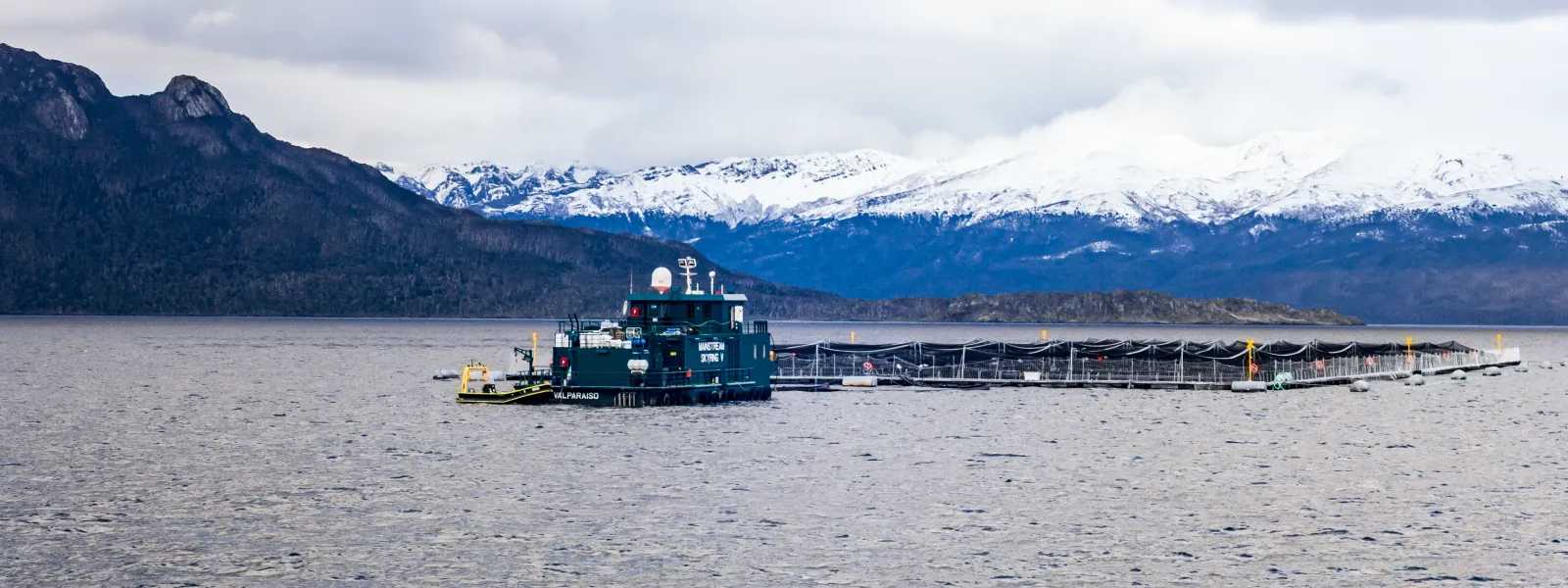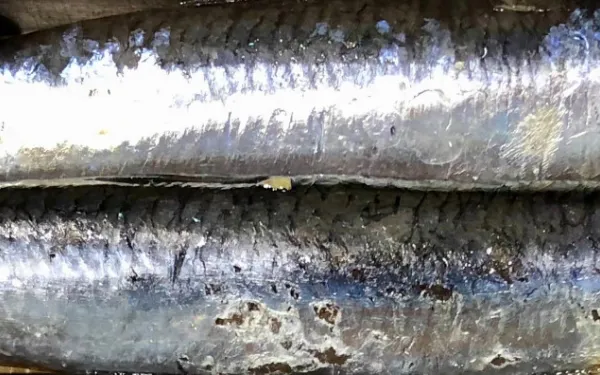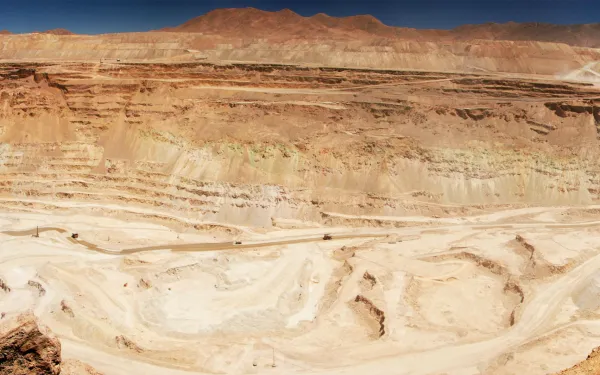
Project
Photo: #RealChileProtecting Patagonian Seas from Salmon Farms
The Straight of Magellan in Chilean Patagonia (or Magallanes, as it’s known in Spanish) hosts the largest number of natural protected areas in the country. Permanent snow feeds the idyllic landscape, which has been shaped by glaciers, lakes, rivers and seas. Within its bounds live protected species—blue whales, sperm whales, Magellanic penguins, elephant seals, leatherback turtles, and southern and Chilean dolphins.
The cold waters of this far corner of the world are pristine; this makes them more sensitive to high-impact human activities. And now they’re being stressed by the arrival of salmon farms, which have already caused severe environmental damage in regions further north.
In Chile, the salmon industry uses harmful techniques and operates without proper regulation. Its rapid growth has overwhelmed coastal waters, filling them with huge amounts of antibiotics, chemicals, and salmon feces. These pollutants have led to partial or, in some places, complete lack of oxygen in the water, threating all forms of marine life.
Large salmon farms in the Magallanes region are already causing big damage. According to a government audit, more than half of the salmon farms operating there are affecting the availability of oxygen in the water, a condition that did not occur prior to their arrival.
Partners:

Related projects

Towards Ecosystem Management of the Peruvian Anchoveta Fishery (in Spanish)
The report, created with the financial support of the Pew Charitable Trusts, contains recommendations for the legal and institutional reforms needed to manage the fishery while caring for the needs of the ecosystem as a whole. The recommendations are designed to ensure that the fishery is managed to provide enough anchoveta for both the commercial fishing industry and the rest of the marine life that depends on it. Download the report (IN SPANISH)
Read more
Guidelines for the Environmental Impact Assessment of Mining Projects
For many communities, water is a scare and therefore valuable resource. Access to it is complicated if rivers, lakes, or other sources are polluted or overused. Water quality often suffers when the impacts of mining projects are not adequately evaluated before the mines are authorized. AIDA’s legal expertise is helping to prevent or minimize mining’s damage on the environment and on the people who depend upon it. In collaboration with scientists and experienced technicians, we’ve prepared a guide detailing the comprehensive analysis that must be completed for any Environmental Impact Assessment of a proposed mining project. The guide will be as useful to authorities as to communities and civil society organizations. This guide recommends that, in all its sections, the Environmental Impact Assessment of a mining project contain detailed information that addresses everything from general aspects of the project to its social and environmental impacts, as well as measures to prevent or mitigate them. Read and download the report (in spanish)
Read moreCOP20 fails to provide certainty on climate finance and human rights
The 20th Conference of the Parties to the United Nations Framework Convention on Climate Change (COP20) was held this month in Lima, Peru, with the goal of drafting a new climate agreement, to be signed in Paris in 2015. The conference, however, concluded with an unimpressive draft agreement that failed in two key tasks: providing certainty about funding to combat climate change, and including human rights protections in climate actions. For AIDA and other civil society organizations, it was important that the Lima agreement lay out a roadmap for how and when governments will fulfill their commitment to provide 100 billion dollars per year by 2020 to finance mitigation activities and adaptation to climate change. "Developing countries need to know with certainty how much money they have and what the source of it will be, so they can plan their fight against climate change," said Andrea Rodriguez, a senior attorney for AIDA. The Conference provided no such certainty. This is evidenced by the decision made on the Intended Nationally Determined Contributions (INDCs), which left out finance and adaptation—key aspects to the countries most vulnerable to extreme changes in climate. The INDCs decision was meant to contain specific information on the scope, format, timeframe and assessment. Instead it included only contributions for mitigation, without stating whether or not they will be compulsory. During the conference, AIDA and global allied organizations encouraged State Parties to ensure the draft of the new agreement include specific language on the protection, promotion, respect for, and observance of human rights in all climate actions. As a result of the collective effort, the Philippines, Mexico, and Ghana made specific calls for the draft and final agreements to include such references. "There is no doubt that climate change interferes with the enjoyment of human rights. The agreement in Lima includes no reference to human rights, but we will work hard to ensure their full inclusion in the Paris agreement, not only in words, but also in deed," said María José Veramendi Villa, an AIDA senior attorney. Yet it was not all bad. AIDA drew attention to the new pledges that had arrived to the Green Climate Fund, which brought its total funding to 10.2 billion dollars. We highlighted the momentum in Latin America that contributed to that achievement, with countries such as Peru, Colombia, Mexico and Panama making the effort to contribute, despite their status as developing countries. "Although all contributions are welcome, it is important to emphasize that the amount collected so far does not yet cover the financing needs of developing countries," Rodriguez stated. The conference also made public the climate finance actions of governmental and nongovernmental actors in the region. The Climate Finance Day organized by AIDA and allied organizations facilitated a dialogue on regional progress in preparing for accessing resources, the increasing involvement of the private sector in fighting climate change, and the conditions that such support requires—legal certainty being one of them. Also that day, civil society shared their experiences with transparency and accountability, which are essential not only to obtain greater resources, but also to ensure their effective use. AIDA reported on the opportunity the Green Climate Fund provides for countries of the continent to improve public participation in the design, development, and implementation of policies and climate projects. Much remains to be done to find effective solutions to climate change. We will continue contributing to the achievement of this goal!
Read more